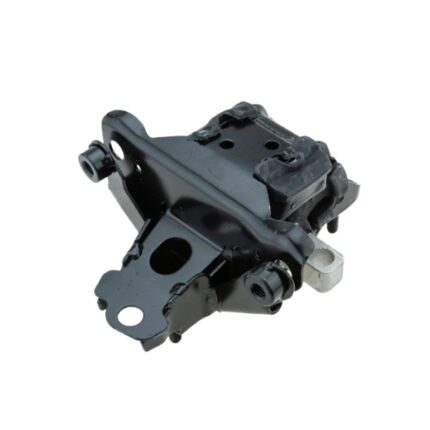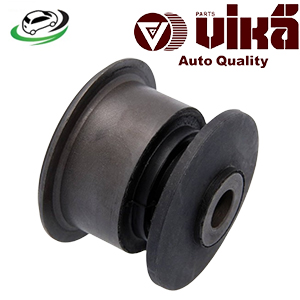Get Rear Axle Strut Volkswagen Lupo 1998-2005 6Q0199851AL
The axle strut is a critical component in a vehicle’s suspension system, contributing significantly to ride comfort, handling, and overall safety. Although not as commonly discussed as other parts like the shock absorbers or springs, the axle strut plays a vital role in maintaining vehicle stability and ensuring smooth operation over various driving conditions. This guide will delve into the function, construction, types, signs of wear, replacement procedures, and the importance of axle struts in a vehicle’s suspension system.
What is an Axle Strut?
An axle strut is a type of suspension component that combines the functions of a shock absorber and a structural support element in one unit. Unlike standalone shock absorbers, which primarily dampen vibrations and impacts, axle struts also support the weight of the vehicle, particularly in independent suspension systems. The strut is attached to the vehicle’s chassis at the top and to the wheel assembly at the bottom, playing a key role in the vehicle’s steering and alignment.
Functions of an Axle Strut
The axle strut serves several important functions in a vehicle’s suspension system:
- Shock Absorption: The strut absorbs the impacts and vibrations caused by uneven road surfaces, providing a smoother ride. It dampens the oscillations of the springs, preventing the vehicle from bouncing excessively after hitting a bump.
- Structural Support: Unlike traditional shock absorbers, axle struts also bear some of the vehicle’s weight. They provide structural support to the suspension system, maintaining the correct ride height and ensuring that the wheels remain properly aligned.
- Steering Control: In many vehicles, especially those with front-wheel drive, the strut is an integral part of the steering system. It helps maintain the alignment of the wheels and ensures that they turn accurately in response to steering inputs.
- Ride Height Maintenance: The axle strut helps maintain the proper ride height of the vehicle, which is crucial for optimal handling and stability. This is particularly important in vehicles with independent suspension systems, where each wheel moves independently to absorb road irregularities.
- Tire Wear Reduction: By keeping the wheels properly aligned and preventing excessive bouncing, the strut helps reduce uneven tire wear. This extends the life of the tires and improves traction and fuel efficiency.
Construction of an Axle Strut
An axle strut is a complex assembly that typically consists of the following components:
- Strut Body: The main cylindrical body that houses the internal components, including the piston, valve, and hydraulic fluid. The body is usually made of durable metal to withstand the high stresses encountered during driving.
- Piston and Valve: Inside the strut body, a piston moves up and down in response to road conditions. The piston is connected to a valve that controls the flow of hydraulic fluid within the strut. This fluid flow is what provides the damping effect, absorbing shocks and vibrations.
- Coil Spring: Many axle struts are designed as a “coil-over” assembly, where a coil spring is mounted around the strut body. The spring helps support the vehicle’s weight and works in conjunction with the strut to absorb shocks.
- Mounting Points: The strut has mounting points at both ends. The upper mount connects the strut to the vehicle’s chassis, while the lower mount attaches it to the wheel assembly. The upper mount often includes a bearing that allows the strut to pivot as the wheels turn.
- Bump Stop: A bump stop is a rubber or foam component located inside the strut assembly. It prevents the strut from compressing too much and causing damage to the internal components during severe impacts.
Types of Axle Struts
There are several different types of axle struts, each designed for specific applications and driving conditions:
- MacPherson Strut: The most common type of strut used in modern vehicles, the MacPherson strut combines the shock absorber and coil spring into a single unit. It is widely used in front suspension systems due to its simplicity and cost-effectiveness.
- Gas-Charged Strut: This type of strut uses pressurized nitrogen gas in addition to hydraulic fluid to provide better damping performance. Gas-charged struts are known for their improved response and resistance to “fade” (loss of damping ability) during extended use.
- Hydraulic Strut: Hydraulic struts rely solely on hydraulic fluid for damping. They are typically less expensive than gas-charged struts but may not offer the same level of performance, particularly under extreme conditions.
- Adjustable Strut: Adjustable struts allow the driver to modify the damping characteristics to suit different driving conditions. These struts are popular in performance vehicles where precise handling and ride quality are essential.
- Electronic Strut: Some modern vehicles are equipped with electronic struts that can automatically adjust the damping force in real-time based on driving conditions. These struts are often part of an active suspension system and provide a superior balance of comfort and performance.
Signs of Worn or Failing Axle Struts
Over time, axle struts can wear out or become damaged, leading to a variety of symptoms that can affect the vehicle’s handling and ride quality. Common signs of worn or failing axle struts include:
- Excessive Bouncing: If the struts are no longer effectively absorbing shocks, the vehicle may bounce excessively after hitting a bump. This can make the ride feel unstable and uncomfortable.
- Nose-Diving: When braking, a vehicle with worn struts may exhibit nose-diving, where the front end dips significantly. This can increase stopping distances and reduce braking efficiency.
- Uneven Tire Wear: Worn struts can cause the wheels to become misaligned, leading to uneven tire wear. You may notice that the tires wear more on one side than the other, which can reduce traction and increase the risk of a blowout.
- Leaking Fluid: If you notice oil or hydraulic fluid leaking from the struts, it is a clear sign that they are failing. Leaks can compromise the strut’s ability to dampen shocks and should be addressed immediately.
- Clunking or Rattling Noises: A failing strut may produce clunking or rattling noises, particularly when driving over bumps or rough roads. This noise is often caused by internal components becoming loose or worn out.
- Poor Handling: Worn struts can negatively affect the vehicle’s handling, making it feel less responsive and more difficult to control, especially during turns or sudden maneuvers.
Consequences of Ignoring Failing Axle Struts
Ignoring the signs of failing axle struts can lead to serious consequences, including:
- Compromised Safety: Worn struts can significantly impact the vehicle’s stability and handling, increasing the risk of accidents. Poorly functioning struts can make the vehicle more prone to losing control, especially in emergency situations.
- Increased Tire Wear: As mentioned earlier, failing struts can cause uneven tire wear, reducing the lifespan of the tires and leading to more frequent replacements. Unevenly worn tires also reduce traction, particularly in wet or slippery conditions.
- Damage to Other Suspension Components: When struts fail, they can place additional stress on other suspension components, such as the springs, control arms, and bushings. This can lead to premature wear and more costly repairs.
- Reduced Comfort: Failing struts can make the ride significantly less comfortable, with increased vibrations and impacts being felt in the cabin. This can make long drives particularly tiring and unpleasant.
Replacing Axle Struts
Replacing axle struts is a task that requires mechanical knowledge and the right tools. The process can vary depending on the vehicle’s make and model but generally involves the following steps:
- Raise the Vehicle: Use a jack to lift the vehicle and secure it with jack stands. This provides access to the struts.
- Remove the Wheel: Remove the wheel to gain access to the strut assembly. This usually requires removing the lug nuts and sliding the wheel off the hub.
- Detach the Strut Assembly: Disconnect the strut from the vehicle’s suspension components, such as the control arm and sway bar links. You may also need to remove the brake line bracket and other attachments.
- Remove the Strut: Unbolt the strut from the chassis at the top mount and carefully remove it from the vehicle. Be sure to support the strut as you remove it to prevent damage to other components.
- Install the New Strut: Place the new strut in position and secure it to the chassis and suspension components. Ensure all bolts are tightened to the manufacturer’s specifications.
- Reinstall the Wheel: Once the new strut is in place, reinstall the wheel and lower the vehicle back to the ground.
- Test Drive: After replacing the struts, take the vehicle for a test drive to ensure everything is functioning correctly. Pay attention to the ride quality and handling, and listen for any unusual noises.
Choosing the Right Axle Struts
When replacing axle struts, it’s important to choose the right type and quality for your vehicle:
- OEM Struts: Original Equipment Manufacturer (OEM) struts are designed specifically for your vehicle and offer the same performance and durability as the original parts.
- Aftermarket Struts: Aftermarket struts can vary in quality, so it’s important to choose a reputable brand. Some aftermarket struts may offer improved performance or durability, particularly those designed for specific driving conditions.
- Performance Struts: For drivers looking for improved handling or those with modified vehicles, performance struts made from polyurethane or solid metal may be a good choice. These struts offer increased rigidity but may result in a harsher ride.
Follow us on Facebook for more parts.



